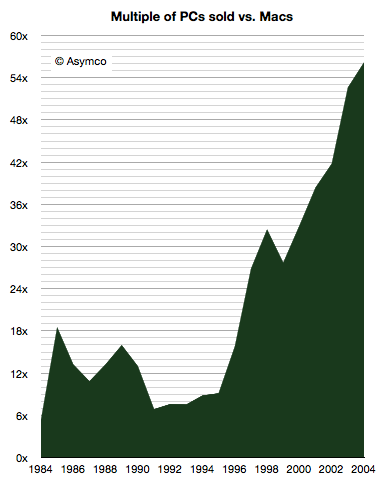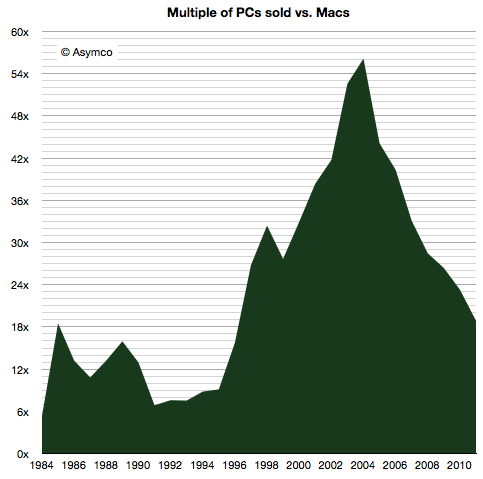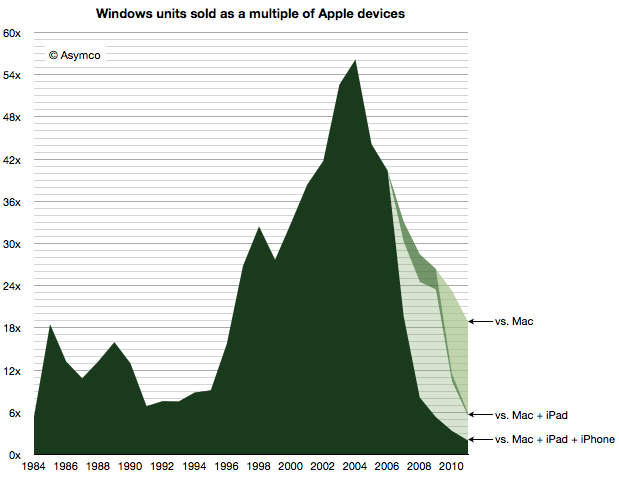Tuesday, July 31, 2012
Monday, July 30, 2012
The Tyee – Oil Wealth: Should Norway Be the Canadian Way?
Norway's amazing savings account
Norway produces 40 per cent less petroleum than Canada and has one-seventh our population, but has saved more than $600 billion in oil revenue and counting. This is equivalent to about 140 per cent of Norwegian GDP, or about $120,000 for every man, woman and child in the country. In contrast, every Canadian is in the red about $16,000 due to our $566-billion national debt.
While Canada is eliminating 19,000 public sector jobs in an effort to balance the budget, Norway is debt-free, enjoys full employment and has fourth highest per capita GDP in the world. Canada is twelfth.
The Conversion of a Climate-Change Skeptic - NYTimes.com
CALL me a converted skeptic. Three years ago I identified problems in previous climate studies that, in my mind, threw doubt on the very existence of global warming. Last year, following an intensive research effort involving a dozen scientists, I concluded that global warming was real and that the prior estimates of the rate of warming were correct. I’m now going a step further: Humans are almost entirely the cause.
Sunday, July 29, 2012
From Information to Understanding: Moving Beyond Search In The Age Of Siri | TechCrunch
Knowledge = Information Meaning
Friday, July 27, 2012
Bob Ross Remixed | Happy Little Clouds | PBS Digital Studios - YouTube
Another classic remix - it is good to see PBS is actually doing these themselves.
Mister Rogers Remixed | Garden of Your Mind | PBS Digital Studios - YouTube
This is awesome......I can't wait to show the kids.
Mister Rogers Remixed | Garden of Your Mind | PBS Digital Studios - YouTube
Wednesday, July 18, 2012
Ebay Beats Forecasts On Strong Growth From Marketplaces, Q2 Revenue Up 23 Percent To $3.4B | TechCrunch
RIP EMPSONposted 3 hours ago0 Comments
eBay has just released its second quarter 2012 earnings report, in which the eCommerce giant outpaced expectations for yet another quarter. Revenue increased 23% to $3.4 billion, compared to the same period of 2011. Non-GAAP earnings came in at $0.56 per diluted share, while eBay posted Q2 net income of $692 million — up from $283 million in Q2 2011. In terms of benchmarks, analysts had been expecting earnings of $0.55 per share on revenue of $3.36 billion.
Hands-On With Organic Transit’s Pedal-Solar Electric Hybrid Vehicle, “The Elf” | TechCrunch
Tuesday, July 17, 2012
Sunday, July 15, 2012
A Creative Corner of Victoria - Slide Show
Victoria, British Columbia, is a city whose former colonial ties to Britain are evident in the neo-Baroque government buildings and countless gardens that dot its landscape. But visitors who trade high tea at the Fairmont Empress Hotel for a stroll around the city will find that it defies easy stereotypes. Exhibit A is Fernwood, a short walk from downtown, home to classic Victoria hallmarks like historic buildings as well as a pirate radio station, a vibrant music scene and local fixtures like a man known for his obsession with blowing bubbles. Since the neighborhood began emerging from decades of blight in the mid-aughts, it has been the best place to explore the city’s blossoming alternative culture.
— ERICA GIES
Credit: Wendell Phillips for The New York Times
Saturday, July 14, 2012
CRAZY ARCADE FLYERS

Click on the link and enjoy....I haven't seen so much big hair since a last saw a Whitsnake video...
Sunday, July 08, 2012
How Steven Spielberg’s Malfunctioning Sharks Transformed the Movie Business - Mental Floss
Before Steven Spielberg became Hollywood royalty, he was just another young director with a giant shark problem.
It was July 1974, and 27-year-old Steven Spielberg was sure his career was over. He’d been on location in Martha’s Vineyard for three months, waiting for the overdue star of his new movie Jaws. And now, as he watched the first lunges of the $250,000 mechanical shark in action, Spielberg’s heart sank. The beast was anything but menacing. His eyes crossed. His teeth were too white. His jaws didn’t close properly. And he had a big dimple that made him look like Kirk Douglas.
The shark was just the latest of Spielberg’s setbacks. Before Jaws, movies weren’t shot on the ocean. Hollywood studios simply tossed a boat in a tank and projected moving scenery behind it. But Spielberg wanted realism. And he paid for it. Boating mishaps and near drownings had almost killed several cast and crew members.
Rough waters and drifting tides made for chaotic filming. Most days, once the crew had anchored the 12 tons of rigging into place and waited out unwanted boats on the horizon, Spielberg was left with just two hours of afternoon light to shoot. As Spielberg burned through his $4 million budget and 55-day shooting schedule, the cast and crew turned mutinous. Angry locals left dead sharks on the production office’s porch. Studio execs worried the film wouldn’t deliver. And Spielberg lived in constant fear of having the plug pulled. Word in Hollywood was that the young director was finished. But Spielberg, who felt “like Captain Bligh” on a sinking ship, was determined to complete his movie, shark or no shark.
A Picture Book of Fears
When a Long Island fisherman caught a 4,500-pound great white in 1964, author Peter Benchley took notice. “What would happen if one of those things came around and wouldn’t go away?” he asked. Ten years later he turned the idea into the bestselling novel Jaws. Benchley’s book sparked an immediate bidding war in Hollywood, with Universal coming out on top—all before it even hit shelves.
Spielberg wasn’t the studio’s first choice as director. Universal initially approached Dick Richards, but when Richards kept referring to the story’s predator as “a whale,” the producers lost patience. Enter the young and ambitious Steven Spielberg. His résumé included more TV movies and episodes of Columbo than feature films. And his one stab at the big screen, The Sugarland Express, had drawn critical raves but tanked at the box office. Still, the suits were impressed by his confidence. Spielberg’s vision for Jaws was part high adventure, part horror: “a picture book of fears, phobias and anxieties.”
Spielberg had his own doubts about the project. As a new director, he had art-house aspirations and dreamed of making critically acclaimed films. But he knew that one more flop would torpedo his career. He had to make Jaws a blockbuster.
To do that, he needed a truly terrifying shark. Producers wanted Spielberg to hire someone to train a great white—an impossibility. The director toyed with rubber props before ultimately deciding the only real answer was to build a remote-controlled mega-shark—a 25-footer that could swim, leap in the air, and munch on human prey. Every special effects company in Hollywood called the task impossible. Undeterred, Spielberg lured effects guru Bob Mattey out of retirement. Famous for designing the giant squid in the 1954 film 20,000 Leagues Under the Sea, Mattey assured the director he could build the perfect monster.
With three sharks in production (collectively nicknamed Bruce, after Spielberg’s lawyer), Spielberg focused on the screenplay, which had gone through four writers and five drafts. The script was still unfinished as shooting began, so Spielberg hired his friend Carl Gottlieb to do the final polishing on set. Though it made the studio nervous to use a sitcom writer whose credits included The Odd Couple and All in the Family, Gottlieb proved to be one of the movie’s secret weapons.
Each night he sat with stars Roy Scheider, Richard Dreyfuss, and Robert Shaw, taking notes as they improvised unfinished scenes. In Gottlieb’s hands, a straight monster flick became a character-driven film. And many of the flick’s most memorable lines—including “You’re gonna need a bigger boat”—came out of his process.
During the first three months of production, Spielberg focused on bringing fictional Amity Island to life. Whether orchestrating hundreds of extras through a beach panic scene or refereeing an off-screen battle of egos between Shaw and Dreyfuss, the director remained calm and confident. But as he prepared to take his cameras onto the high seas, one question remained: Where was the shark?
What Would Hitchcock Do?
When Mattey finally delivered Bruce, Spielberg began to panic. On its first day on the job, the shark promptly sank to the bottom of Nantucket Sound. Within a week, saltwater had eroded Bruce’s electric motor, and he had to be refitted with a system of pneumatic hoses. Every night, Bruce also had to be drained, scrubbed, and repainted. Even by diva standards, Bruce was high-maintenance.
“I had no choice but to figure out how to tell the story without the shark,” Spielberg said. “So I just went back to Alfred Hitchcock: ‘What would Hitchcock do in a situation like this?’ … It’s what we don’t see which is truly frightening.”
The idea of the unseen enemy completely changed the film’s direction. It shapes the opening scene where a girl goes for a midnight swim and becomes the shark’s first victim. We see her legs underwater. We hear the ominous notes of John Williams’s score. And then we watch as she’s yanked down and dragged violently through the sea. The crew achieved this terrifying effect by tying ropes around actress Susan Backlinie, then playing a game of aquatic tug-of-war.
The sidelined shark also prompted Spielberg’s creative use of the ocean itself. He wanted the water lapping at the lens to make the audience feel like they were not only “in the ocean, but about to drown.” Cameraman Bill Butler invented a “water box” with glass windows that allowed cameras to be submerged. Gottlieb deepened the constant state of anxiety by stirring humor into the horror. Almost every appearance of the shark comes directly on the heels of a joke—the careful orchestration of screams, laughs, and foreboding silence keeps the audience emotionally off balance.
An exhausted Spielberg finally returned to Hollywood 159 days and nearly $8 million later. But his work wasn’t over. With the help of veteran editor Verna “Mother Cutter” Fields, he pieced the movie together. The New England weather haunted him—the wildly varying light and changing skies made for endless headaches as they matched footage. Massive reels of Bruce had to be cobbled into cohesive bursts of terror. To add an extra scare, Spielberg reshot part of one scene in Fields’s backyard pool, dumping powdered milk in the water to approximate the murky ocean. But even after finalizing the film, Spielberg doubted the results. Would his shark movie scare audiences, or would it be the “laugh riot of ’75”?
Legacy
Spielberg didn’t know it, but his malfunctioning sharks were about to radically alter Hollywood’s business model. All the shooting delays meant that Jaws couldn’t hit its planned release date, right in the heart of 1974’s lucrative Christmas season. Instead, Universal made the gutsy call to hold the film until summer, a season that had traditionally been the dumping ground for cinematic afterthoughts.
Then something unbelievable happened. Test screenings that spring drew such positive reactions that MCA/Universal’s stock price shot up by several points. Certain that it had a hit, Universal seized the momentum with a marketing blitz. Studios had always shied away from using expensive television spots to market films, but Universal dropped an unheard-of $700,000 to saturate prime-time programming with 30-second trailers.
The opening strategy was equally aggressive. Traditionally, high-profile movies opened in New York City or Los Angeles before slowly spreading to other cities and then trickling into small towns months later. Wide releases were generally reserved for duds; studios would cast a wide net to maximize ticket sales before negative word of mouth killed a film. But after the ad campaign made Jaws the summer’s can’t-miss flick, Universal went all-in on the release, and the movie opened in an unprecedented 465 theaters on June 20, 1975.
The gambles paid off—Jaws grossed $60 million in its first month. It went on to become the first film to top $100 million, eventually hauling in an astonishing $260 million. Critics were just as enthusiastic. The New Yorker’s Pauline Kael dubbed it “the most cheerfully perverse scare movie ever made.” The film was nominated for the Academy Award for Best Picture, and it won three other Oscars.
Spielberg would later say, “Jaws should never have been made—it was an impossible effort.” Yet all those frustrating days at sea and short-circuiting sharks got the young director exactly what he had always wanted. By creating the prototype for every summer blockbuster that followed, Spielberg earned
the freedom to make artier films like The Color Purple and Schindler’s List. He went into his next project, Close Encounters of the Third Kind, armed with a bigger budget, more creative control, and the knowledge that sometimes the biggest obstacles were actually his biggest assets.
This article appears in the July-August 2012 issue of mental_floss magazine, available wherever brilliant/lots of magazines are sold. Get a free issue here!
More from mental_floss…
11 Authors Who Hated the Movie Versions of Their Books
*
10 Flight Attendant Secrets
*
How Mister Rogers Saved the VCR
*
19 Outstanding Words You Should Be Working Into Conversation
Thursday, July 05, 2012
Designing Bond's World on Devour.com
Designing Bond's World
Aston Martins are as important to a Bond film as a shaken martini (we're talking to you, Skyfall). To mark the 50th anniversary of the 007 film franchise, The Barbican sits down with set designer Sir Ken Adam, Aston Martin's Head of Design, and the designers and makers of the legendary Golden Gun, to talk about the creation of the iconic world inhabited by Bond. James Bond.
Building and dismantling the Windows advantage | asymco
When the Macintosh was launched in 1984, computers running the MS-DOS operating system were nearing a dominant position in the market. Having launched in 1981 as the IBM PC, they were quickly cloned and four years later “PCs” were selling at the rate of 2 million/yr. The Mac only managed 372k units in its first year.
In other words, PC was outselling the Mac by a factor of nearly 6. It turned out to be a high point. The ratio by which the PC outsold the Mac only increased from there.
When Windows 95 launched in 1995 it negated most of the advantages of the ease of use of the Macintosh and the PC market took off. The ratio reached 56 in 2004 when 182.5 million PCs were sold vs. 3.25 million Macs.
During the second half of the 90s it was already clear that Windows won the PC platform war. Windows had an advantage that seemed unsurmountable.
I should point out that this ratio between platforms is not just an exercise in arithmetic. It’s a measure of leverage. The advantage of dominance is realized in an ecosystem which creates lock-in and additional economies in marketing. Ecosystems become self-perpetuating and there is a tendency toward monopoly. The stronger you are, the stronger you get.
Then, in 2004, something happened.Although PC volumes continued to grow, they did so more slowly and the Mac grew faster. What coincided with this was the emergence of portable computing. The MacBook became easily differentiable as a “better” laptop. It was not faster, did not have more storage or any key metrics being used to sell PCs. It was just better as an integrated product. The integration manifested itself through a sense of quality and robustness as well as intangibles like aesthetics and “feel”. I wrote about this a few years ago.
As a result the Mac began to whittle down the advantage Windows had. The ratio of Windows to Mac units shipped fell to below 20, a level that was last reached before Windows 95 launched. It’s as if the Mac reversed the Windows advantage. This was an amazing turnaround for the Mac.
But the story does not end there.If we consider all the devices Apple sells, the whittling becomes even more significant and the multiple drops to below 2. Seen this way, Post-PC devices wiped out of leverage faster than it was originally built. They not only reversed the advantage but cancelled it altogether.
Considering the near future, it’s safe to expect a “parity” of iOS+OS X vs. Windows within one or two years. The install base may remain larger for some time longer but the sales rate of alternatives will swamp it in due course.
The consequences are dire for Microsoft. The wiping out of any platform advantage around Windows will render it vulnerable to direct competition. This is not something it had to worry about before. Windows will have to compete not only for users, but for developer talent, investment by enterprises and the implicit goodwill it has had for more than a decade.
It will, most importantly, have a psychological effect. Realizing that Windows is not a hegemony will unleash market forces that nobody can predict.
Five years later: How the iPhone reinvented Apple — Apple News, Tips and Reviews
June 29, 2007, is the day I’ve come closest to being trampled to death. I blame Steve Jobs for this.
As the countdown clock in the Apple Store window on Stockton Street in San Francisco neared zero, hordes of reporters from all over the world, customers — some who’d waited in line for two days — and curious passersby all at once surged toward the glass to get a better view as the doors opened for the first time to sell the smartphone that has revolutionized mobile computing: the iPhone.
Friday marks the five-year anniversary of that day. No product launch has ever come close to the crazy spectacle we saw (and survived) that day. A lot has changed about iPhone launches since 2007. People still line up, some media still cover it, but it’s more orderly now because waiting in line for an Apple phone is not considered unusual, and because iPhone distribution has expanded to include online channels and three major U.S. carriers.
The mobile world into which the original iPhone was born has seen other, vast changes in the last five years: Virtual keyboards are now standard; wireless operators changed the way they do business; and a company formed around an app designed on and for the iPhone platform has sold for a billion dollars.
Nothing, however, has changed more in those five years than Apple itself.
The iPhone, at first looked upon skeptically by some as an overhyped toy, has catapulted Apple to the top of the technology and business worlds. Apple is valued today at more than $530 billion, which, for those counting, is worth more than two Microsofts and almost three Googles. Amd it could buy both of the mobile powerhouses of 2007, Nokia and RIM, outright. That is if it wanted a piece of the disasters that have unfolded in Finland and Canada since the launch of the iPhone.
The stock chart for AAPL has pushed steadily upward and to the right since Apple introduced its combination iPod, phone and mobile Internet device. The Monday after the iPhone launch in 2007, Apple stock opened at $132.30. Yesterday it closed at $569.05.
Apple’s balance sheet, too, has been transformed by the iPhone. The device has become the engine for an incredible profit machine that drives the whole company. Apple has sold somewhere around 250 million iPhones in five years, according to Strategy Analytics, which is estimated to have added $150 billion in profit alone.
Apple hasn’t just sat on its enormous profits, however. It’s put some of it away — it had $7 billion in cash in July 2007, in April it had $110 billion. But it’s put much of it right back into the business of making and selling its phones, iPads and computers and building out its physical stores that help drive more device sales. More recently Apple has opened a series of gigantic state-of-the-art data centers to power the post-PC dream world it has largely created.
It uses that money to ensure product supply and ramp production to meet demand, which has the nice side benefit of blocking out potential competition by buying up, for example, the world’s supply of touchscreens. It helps Apple outfit the factories of partners like Foxconn with crazy-expensive, custom laser tools to keep its products differentiated in small but important ways. All of these are strategies that are core to the Apple way. And under Tim Cook’s direction of its operations have been perfected and expanded during the iPhone era.
The iPhone, of course, is not just about money. It’s also about vision. The iPod made Apple Computer into a consumer electronics player. But the iPhone altered the company’s destiny and turned Apple into a mobile company — it dropped “Computer” from its name the same day it initially introduced the iPhone in January 2007. No other traditional PC company has managed to make the same switch, and, as noted above, two pre-iPhone mobile giants — Nokia and RIM — are struggling in this new era while the seminal mobile company, Palm, is dead.
And since deciding to embrace being a mobile company, Apple’s computer business has, ironically, flourished. Almost every quarter in the past few years has included the phrase “best Mac quarter ever” from an Apple executive’s lips. People likely drawn to its stores for iPhones, and now iPads, are trying out Macs — half of the Macs Apple sells every quarter in its stores are to first-time Mac buyers.
The iPhone was also the defining product of Steve Jobs’ amazing career. By proving to Apple, the software development industry and the public that the company understood what mobile users wanted with the iPhone, it made way for the iPad, which was Jobs’ original dream device for mobile computing. It’s fair to say that without the iPhone, the iPad would have been a very tough sell — pre-iPhone, Jobs did not have the influence in the mobile world or the millions of third-party mobile apps that he did in late January 2010, when he first laid out his vision for a 9.7-inch, $500 touchscreen tablet.
Without the iPhone, we wouldn’t have Apple pushing innovation in all kinds of areas – App Store, Siri, mobile gaming, how we consume media content and much more — and it’s bringing its chief rivals like Google, Amazon, Microsoft and Facebook along with it. Because of the iPhone, Apple is, right now, the planet’s leading technology company.
That success has brought competition on many fronts. But the tech world has never been the same since June 29, 2007, much the same way the debut of the PC and the Mac ended the reign of computing giants like Data General, Wang and Digital Equipment.
And for that, we can blame Steve Jobs.
Please check out the rest of our stories on the fifth anniversary of the iPhone, collected here.
Related research and analysis from GigaOM Pro:
Subscriber content. Sign up for a free trial.
- Facebook’s IPO filing: ideas and implications
- CES 2012: a recap and analysis
- Connected world: the consumer technology revolution










